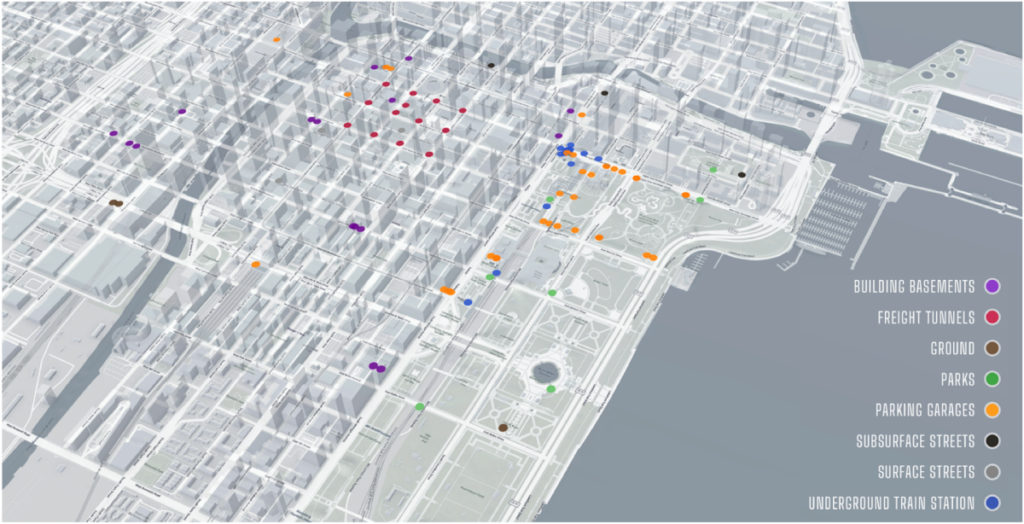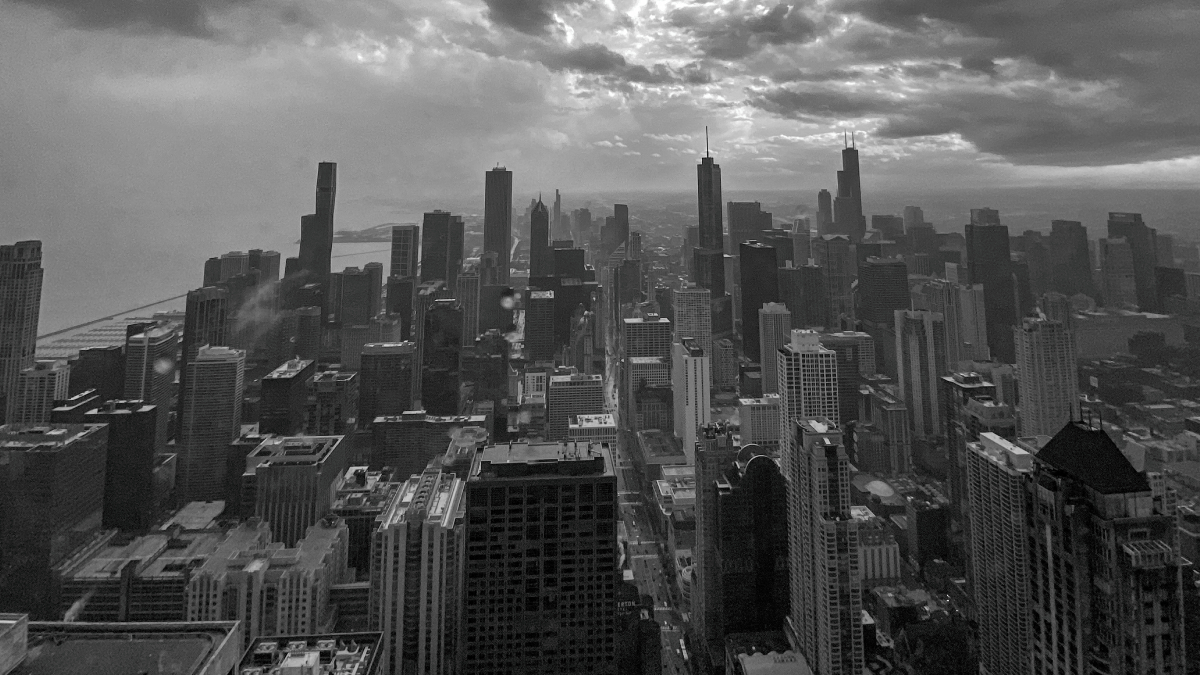Excess underground heat poses an unseen risk to public health, the subsurface environment, and transportation infrastructure. Now, new research has examined how this heat, which has been climbing higher as the world warms, puts underground structures at risk. A case study of infrastructure in the Chicago Loop, one of the most densely populated areas in the United States, found that rising underground temperatures could compromise the efficiency and safety of civil structures.
Under current heat conditions, “the impacts on civil infrastructure can be significant,” said Alessandro Rotta Loria, who led the new research. “And what we know is that global warming will only worsen what will happen.” Rotta Loria is a civil and environmental engineer at Northwestern University in Evanston, Ill.
Feeling the Heat
Most underground structures, including basements, parking garages, subways, wind tunnels, sewage networks, and power lines, release waste heat that warms the rock and soil immediately around them. Heat can diffuse into the ground directly from the air, too. These localized and diffuse drivers create subsurface heat islands that like their aboveground counterparts, can worsen conditions for city dwellers compared with rural residents.
Scientists have been studying the dangers of rising underground heat for several decades, Rotta Loria said. Past research has uncovered how excess subsurface heat can influence seed germination, insect populations, bacterial and viral growth, heat-induced diseases, underground railway safety and efficiency, and the direction and magnitude of groundwater flows.
This heat can also warp and deform rocks and soil, as well as the construction materials embedded within it, though these effects hadn’t yet been studied. So Rotta Loria set out to characterize how underground climate change poses a risk to subsurface infrastructure.
To do this, he and his team deployed a network of 150 temperature sensors throughout the surface and subsurface environment in the Chicago Loop. This network allowed them to model how temperature aboveground correlates with temperatures in different types of subsurface structures like building basements, underground streets, parking garages, and transit tunnels, each of which exists at a different level belowground.

“This research is impressive in the level of detail in the monitoring,” said Grant Ferguson, a hydrogeologist at the University of Saskatchewan in Canada who was not involved with this study. “The idea of extensive subsurface temperature changes being important in urban environments has been around for a few decades, but early studies had very coarse resolution compared to this study.”
“When you know the temperature at the surface of the Loop, you can predict what the temperature is in given classes of underground structures.”
Analysis of the temperature readings revealed that “when you know the temperature at the surface of the Loop, you can predict what the temperature is in given classes of underground structures,” Rotta Loria explained. “You can predict, for example, the average temperature in basements in the Loop, or in parking garages, or in the CTA tunnels, or in the METRA stations.…It’s something that is inherent to these underground structures.”
The researchers found that in some locations, the temperatures could reach 25°C at 10 meters below the surface (in the soft clay layer) and around 15°C at 23 meters down (in the hard clay layer). Those temperatures may have caused millimeter-scale soil deformations that worsened the structures’ operational efficiency but likely have not compromised structural integrity.
“The effects documented here could be within the factor of safety used for the infrastructure, but that would imply that there is reduced capacity to deal with other stressors,” Ferguson noted.
Older buildings, which are common in the Chicago Loop, were hot spots, owing to their basement furnaces and poor thermal insulation. Underground parking garages like the one beneath Millennium Park also stood out in the team’s heat maps, as their high traffic volume generates a lot of heat. Rotta Loria published these results in Communications Engineering in July.
Waste Heat? Waste Not
Rotta Loria noted that this study’s quantitative results are specific to the Chicago Loop and its unique blend of old and new structures; temperature-sensitive, clay-rich soil; and proximity to a major lake and river that act as heat sinks. Other cities have their own relationship between surface and subsurface temperatures.

The severity of a city’s subsurface heat island “is going to vary depending on urban morphology, subsurface properties, and so on,” he said. “It’s going to change in every city and, even within a city, is going to change neighborhood by neighborhood.”
But he did observe some general trends that likely apply to all urban infrastructure: Older buildings create thermal hot spots, whereas newer buildings, which were built with better energy efficiency, do not.
Despite this, “if subsurface heat islands will not be mitigated, even new buildings could be affected,” Rotta Loria said.
“Ground source heat pumps, including thermal piles, could use some of the excess heat.”
“We are indeed in front of a potential problem,” Rotta Loria said, “but we’re also in front of a very significant opportunity.” Heat maps like the one created in this study could be used to identify the best targets for heat mitigation. Older buildings and tunnels that bleed heat could be retrofitted with better insulation, and cities could deploy geothermal technologies to capture that heat and repurpose it back into the buildings for space heating or hot water production.
“Ground source heat pumps, including thermal piles, could use some of the excess heat,” Ferguson said. “Balancing heat and cooling loads where multiple users are involved will be a challenge. It will likely require regulation of the subsurface in ways that we haven’t thought of and may require innovations in governance.”
—Kimberly M. S. Cartier (@AstroKimCartier), Staff Writer
This news article is included in our ENGAGE resource for educators seeking science news for their classroom lessons. Browse all ENGAGE articles, and share with your fellow educators how you integrated the article into an activity in the comments section below.


